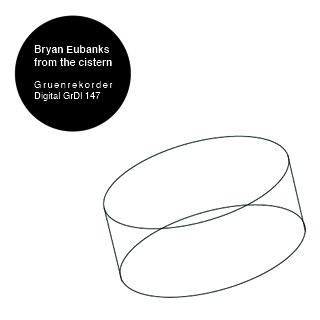Reverb. Love it or hate it, its use has become ubiquitous since at least the advent of the bedroom studio. Digital modeling more often than not replaces natural reverb these days, and even spring reverbs and make-shift creative solutions of the past (eg. Butch Vig’s drum-tunnel as heard on Nirvana’s Nevermind) have become either fetishized or, conversely, under-appreciated. But nothing can truly compare to the incalculable impact of a truly beautifully resonant acoustic space. In my conversation with steve roden, he remarked that “one thing I NEVER use is reverb.” In another more recent interview he clarifies “obviously when you have someone like pauline oliveros or stuart dempster they are recording in underground cisterns, and the natural reverb is amazing and part of the sound in so many ways, but reverb was never an interest for me – to smooth rough edges.”
The cistern in question is “The Cistern Chapel,” located at Ft. Worden Cistern, Olympic Peninsula, WA, and those reverb worshiping Deep Listening Band recordings have been slowly converting disciples to their church. The two million-gallon cistern was drained in the 1950s, left empty and hidden beneath a carpet of grass, overlooking the Puget Sound. At 14′ in height and 200′ in diameter with a nearly 45 second reverb time, it is no surprise that this inadvertently unique acoustic site should inspire such devotion. Enter Bryan Eubanks‘ pilgrimage from the cistern, a 3-track 132-minute long digital album released on Gruenrekorder.
Regular readers are sure to recognize the German label Gruenrekorder, and for aficionados of field-recording their are few labels that can match it in terms of consistently high quality releases. The label has been featured multiple times on our end of year lists, and their free bi-lingual magazine Field Notes remains a must-read.
Bryan Eubanks (b. 1977, US) is a native of Washington State, where the cistern is located, but he now lives in Berlin after stints in Portland and NYC, which adds an additional level of resonance to this project, that of a distance from one’s origins, implying a more poetic, less literal form of “reverb” also being explored by these compositions.
After two research trips to the site, Eubanks calculated the resonant frequency of the cistern to be about 0.91hz, and on his third trip recorded material utilizing this fact, taking these recordings back with him to compose these three pieces exploring the unique properties of the space. Activated by electronically generated sine-tones manipulated by Eubanks to highlight the cisterns acoustic properties, this is most clearly displayed on the first of the three compositions, “Pulses,” which was recorded live in the space and is presented unedited. The second of the compositions, “Five Tuned Tubes,” is the sole instance of using a non-electronically generated sound. Eubanks created said tubes to correspond with five partials of the resonant frequency of the cistern, activating the tubes with a tenor saxophone mouthpiece and reed. The results were edited in order to cut off the attack of the sounds in order to draw attention to the properties of the reverberations’ decay, and then arranged and overlaid to the composition presented here. The final piece is by far the longest at nearly 79 minutes, but uses this time for a perceptual purpose rather than as an over-involved structural end. Eubanks recorded four different series of progressions; linear ascending, the reverse, and a random progression through partials 2-27, and random clouds of partials from a much higher register. These series are slowly brought into audibility and then removed, and at times the composition will sound nearly silent or easily overtaken by incidental noise in one’s listening environment, creating the perfect conditions for a state of deep listening.
Eubanks from the cistern is a mostly austere affair, but despite the somewhat technical or seemingly research-oriented nature of the project, a close listen in the right circumstance can be deeply rewarding. Pauline Oliveros and Stuart Dempster’s Deep Listening Band recordings provide enough of a contrast to reflect on the use of the site on the recording, and the role of space site and architecture more broadly. (Joseph Sannicandro)




Pingback: Pauline Oliveros & Musiques Nouvelles ~ Four Meditations / Sound Geometries | a closer listen